The Apollo system from Solaflect Energy uses a suspension-bridge-style cabling design to cut weight while maximizing strength. With California’s high electricity prices and solar-friendly climate, the company sees the state’s commercial market as the ideal launchpad for its off grid, dual-axis EV-charging tracker.
In October, Solaflect Energy announced the first California installation of its Apollo system — a dual-axis tracker solar electric vehicle car charger.
The system is being deployed in partnership with commercial real estate group Clear Blue Commercial in West Sacramento. The New England–based company chose California as its next market entry, partially because California has wonderful sunlight and the nation’s highest rate of electric vehicle sales. However, also because of its high electricity prices — and because it’s often hard, and expensive, to install grid tied EV charging.
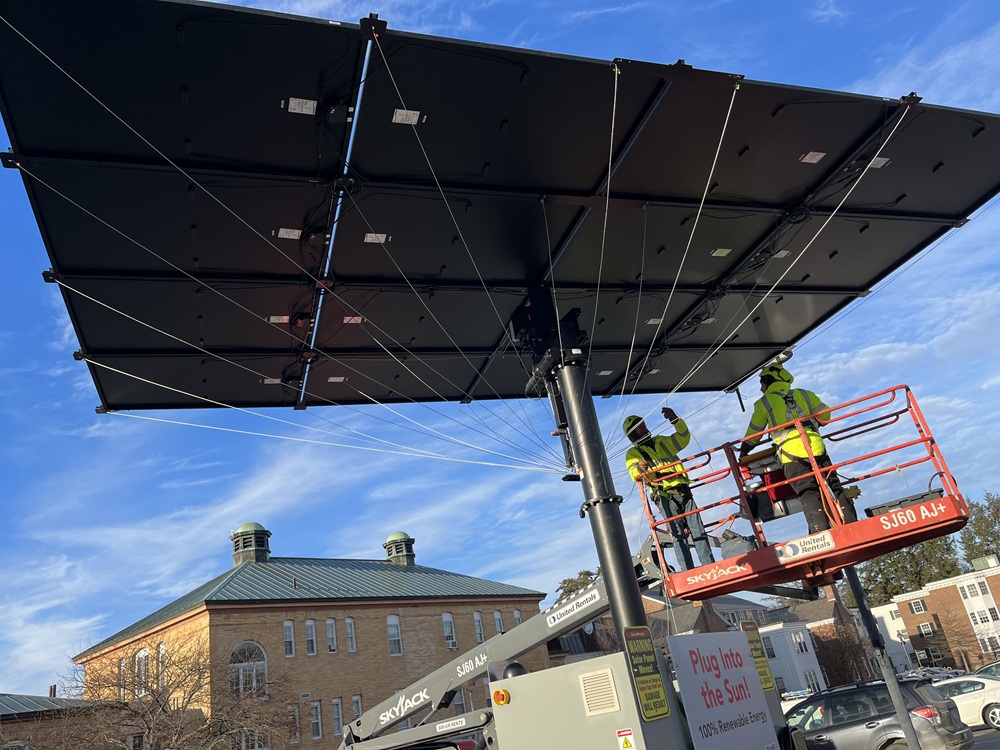
Each of the three units comes with four Level 2 chargers and a maximum system output of 6.88 kW. The Apollo system currently consists of 6.88 kW of Axitec 430-watt solar modules, an 8 kW Sol-Ark inverter, and a 10 kWh Powersync LFP battery to stabilize the system.
While speaking with pv magazine USA, COO Rob Adams said they believe these units align particularly well with workplace parking lots. The sites have mostly daytime traffic and Apollo’s solar production matches the daily “topping off” needs of employees commuting to and from the office.
As an illustration of how workplace charging and Apollo units fit into the modern corporate landscape, the group provided an insightful case study by the Department of Energy. The study showed how a pair of Apollo units helped a 1,200-person, employee-owned company continue its environmental stewardship goals.
Hypertherm was working to minimize the carbon footprint of employees traveling to work, which included financially motivating them to buy electric vehicles. For those who expressed range anxiety, the company installed free chargers and worked to ensure everyone had the energy they needed onsite while they worked.
However, there were layers to be learned…
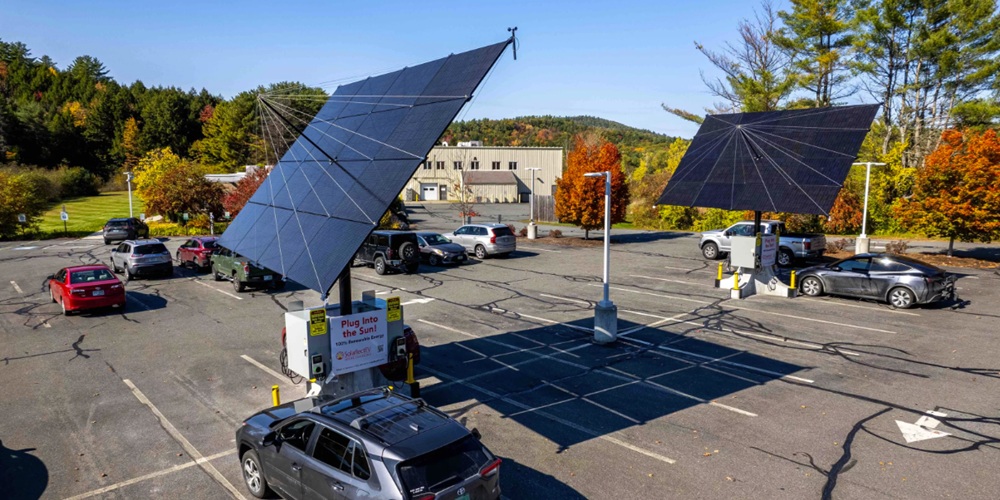
Source: Hypertherm, Hanover, New Hampshire
Range anxiety has proven difficult to define and enforce consistently. To better understand employee needs and refine this policy, Hypertherm developed and distributed an internal survey and the results revealed that perceived range anxiety fluctuates with factors such as cold weather, early or late shifts, and the need to run errands after work.
Hypertherm set a new rule that employees must first charge at the Apollo charging units, among the many standard wall EV chargers the company has installed, to ease grid strain and maximize their value. Hypertherm has since added a third Apollo to serve another of its campuses.
Adams says an Apollo unit — depending on weather and location — can deliver up to 250 miles of range in a day, and up to 64,000 miles over the course of a year. That’s enough to power the average annual commuting needs of 15 to 20 EVs .
According to Solaflect, the hardware that powers the dual-axis tracker has been deployed over 1,300 times in New England during the past nearly 15 years. This means there is an established base of experienced technicians and a supply chain of hardware feeding the exciting Apollo new product extension.
The 14,000-pound unit sits on the existing lines in a parking lot, taking up no parking spaces. It does require a grounding rod and shallow asphalt screws; however, with no utility interconnection, infrastructure upgrades, or construction, all of the assembly work needed to install a unit can be accomplished in a single day. The 12,000-pound concrete base represents most of the system’s weight and ballast.

For most of the conversation, Adams is a disciplined and focused product spokesman. He knows the value generated by his unit for commercial property owners, but give him a moment — and he gets excited about the wide range of applications for an off-grid EV charging solution like Apollo.
Adams said the company is exploring many unique use cases, such as the Appalachian Mountain Club, which manages remote and powerless trail heads and cabins. He’s also in talks with an energy-related “adventure brand” that his product could strategically support.
When asked about residential applications — such as powering a home through a microgrid using car batteries and solar — Adams said it was a good idea, but quickly focused on the financials and the soon-to-expire tax credit.
Right now, the company wants to get its West Coast launch right and make the most of the time between now and December 31, 2027 when the federal tax credit for solar is scheduled to expire. Adams said the unit’s price tag, before incentives, combined with California’s strong sunlight — Apollo generates roughly 16,000 kWh per year — makes a
compelling case. Commercial customers can claim a 30% federal tax credit, plus another roughly 20% in accelerated depreciation – discounting the system’s cost by about 50%.
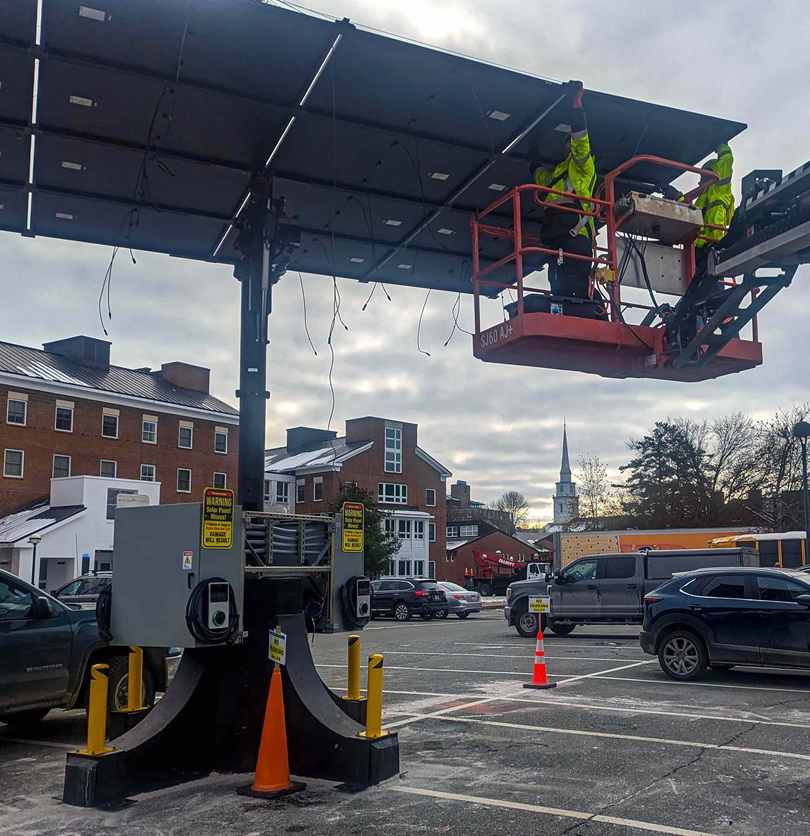
Spread over an expected 25 year lifespan, Adams says that translates to Apollo providing EV charging at under $0.10/kWh given California’s abundant sunshine. The company currently assembles the units in Vermont and ships to client sites, with the majority of components being domestically sourced.
Adams says several of Solaflect’s early installations included businesses, universities, or healthcare providers conducting lotteries to determine for the employees who got to use the Apollo parking spots first for their EVs. The energy he gets – no pun intended – from hearing these stories has been great validation and motivation to keep pushing in the commercial space as indication of growing demand for clean energy, workplace charging solutions.
This content is protected by copyright and may not be reused. If you want to cooperate with us and would like to reuse some of our content, please contact: editors@pv-magazine.com.
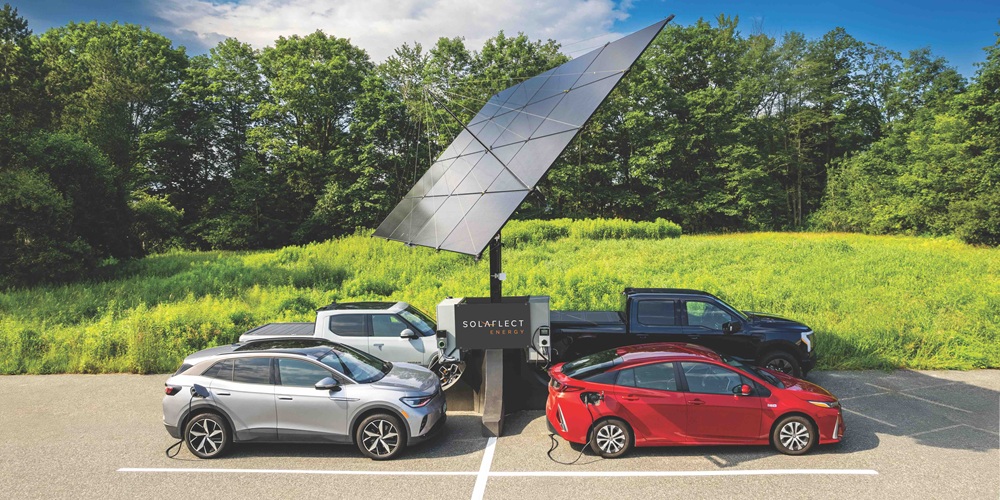


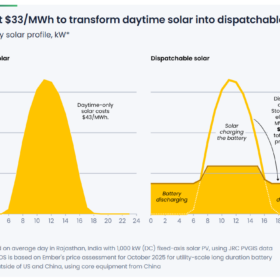




Only $9k/kw of solar. Sorry but they need to do better than that.
A fixed 4 post mount with 30% more panels would cost 30% of that.
And a business solar installers need to get into.